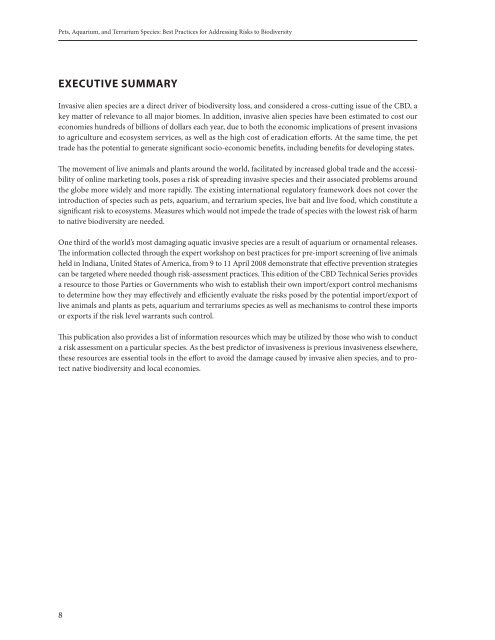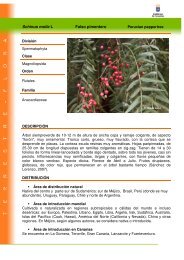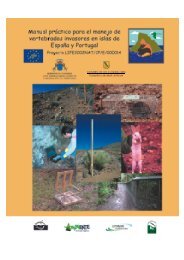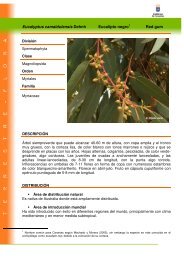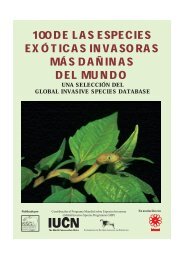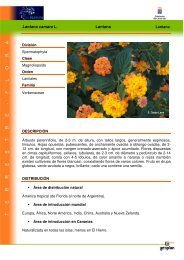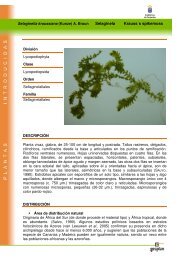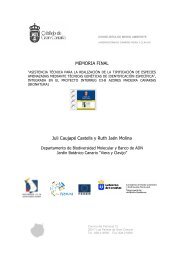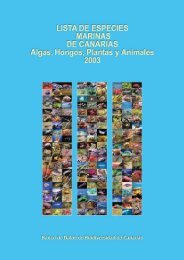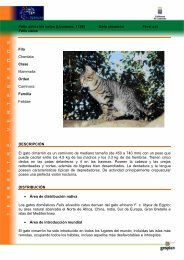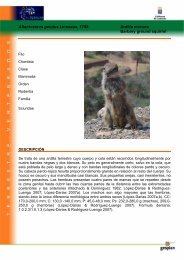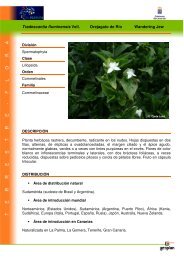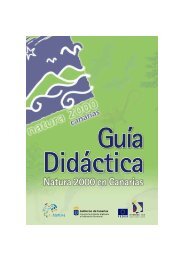Pets, Aquarium, and Terrarium Species - Convention on Biological ...
Pets, Aquarium, and Terrarium Species - Convention on Biological ...
Pets, Aquarium, and Terrarium Species - Convention on Biological ...
You also want an ePaper? Increase the reach of your titles
YUMPU automatically turns print PDFs into web optimized ePapers that Google loves.
<str<strong>on</strong>g>Pets</str<strong>on</strong>g>, <str<strong>on</strong>g>Aquarium</str<strong>on</strong>g>, <str<strong>on</strong>g>and</str<strong>on</strong>g> <str<strong>on</strong>g>Terrarium</str<strong>on</strong>g> <str<strong>on</strong>g>Species</str<strong>on</strong>g>: Best Practices for Addressing Risks to Biodiversity<br />
EXECUTIVE SUMMARY<br />
Invasive alien species are a direct driver of biodiversity loss, <str<strong>on</strong>g>and</str<strong>on</strong>g> c<strong>on</strong>sidered a cross-cutting issue of the CBD, a<br />
key matter of relevance to all major biomes. In additi<strong>on</strong>, invasive alien species have been estimated to cost our<br />
ec<strong>on</strong>omies hundreds of billi<strong>on</strong>s of dollars each year, due to both the ec<strong>on</strong>omic implicati<strong>on</strong>s of present invasi<strong>on</strong>s<br />
to agriculture <str<strong>on</strong>g>and</str<strong>on</strong>g> ecosystem services, as well as the high cost of eradicati<strong>on</strong> efforts. At the same time, the pet<br />
trade has the potential to generate significant socio-ec<strong>on</strong>omic benefits, including benefits for developing states.<br />
The movement of live animals <str<strong>on</strong>g>and</str<strong>on</strong>g> plants around the world, facilitated by increased global trade <str<strong>on</strong>g>and</str<strong>on</strong>g> the accessibility<br />
of <strong>on</strong>line marketing tools, poses a risk of spreading invasive species <str<strong>on</strong>g>and</str<strong>on</strong>g> their associated problems around<br />
the globe more widely <str<strong>on</strong>g>and</str<strong>on</strong>g> more rapidly. The existing internati<strong>on</strong>al regulatory framework does not cover the<br />
introducti<strong>on</strong> of species such as pets, aquarium, <str<strong>on</strong>g>and</str<strong>on</strong>g> terrarium species, live bait <str<strong>on</strong>g>and</str<strong>on</strong>g> live food, which c<strong>on</strong>stitute a<br />
significant risk to ecosystems. Measures which would not impede the trade of species with the lowest risk of harm<br />
to native biodiversity are needed.<br />
One third of the world’s most damaging aquatic invasive species are a result of aquarium or ornamental releases.<br />
The informati<strong>on</strong> collected through the expert workshop <strong>on</strong> best practices for pre-import screening of live animals<br />
held in Indiana, United States of America, from 9 to 11 April 2008 dem<strong>on</strong>strate that effective preventi<strong>on</strong> strategies<br />
can be targeted where needed though risk-assessment practices. This editi<strong>on</strong> of the CBD Technical Series provides<br />
a resource to those Parties or Governments who wish to establish their own import/export c<strong>on</strong>trol mechanisms<br />
to determine how they may effectively <str<strong>on</strong>g>and</str<strong>on</strong>g> efficiently evaluate the risks posed by the potential import/export of<br />
live animals <str<strong>on</strong>g>and</str<strong>on</strong>g> plants as pets, aquarium <str<strong>on</strong>g>and</str<strong>on</strong>g> terrariums species as well as mechanisms to c<strong>on</strong>trol these imports<br />
or exports if the risk level warrants such c<strong>on</strong>trol.<br />
This publicati<strong>on</strong> also provides a list of informati<strong>on</strong> resources which may be utilized by those who wish to c<strong>on</strong>duct<br />
a risk assessment <strong>on</strong> a particular species. As the best predictor of invasiveness is previous invasiveness elsewhere,<br />
these resources are essential tools in the effort to avoid the damage caused by invasive alien species, <str<strong>on</strong>g>and</str<strong>on</strong>g> to protect<br />
native biodiversity <str<strong>on</strong>g>and</str<strong>on</strong>g> local ec<strong>on</strong>omies.<br />
8


